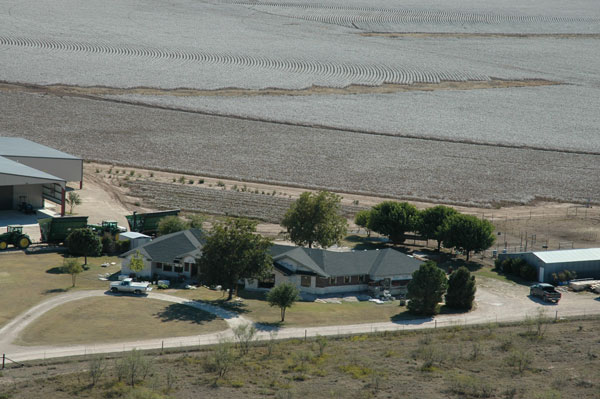
Texas Ag Commissioner Staples says Texas needs new farmers
“Attracting the younger generation into domestic food and fiber production is vital for any Texan who does not want to be dependent on foreign food like we are on foreign oil,” Texas Agriculture Commissioner Todd Staples told a group at a meeting earlier this month to launch an assistance program designed to help young farmers.

Farming is a double-edged sword. It requires a commitment of time, money, passion and a strong back – not to mention being tossed around by the seat of your pants by suppliers, investors, buyers, the weather and the tax man. On a good day, it can pay the bills too, provide a quality life and even turn a profit when all the conditions are right.
But according to economists, industry leaders, college professors and government officials, there is a growing farm crisis looming in our future as food demand and food production change rapidly as the population grows. Thanks to urbanization and a changing climate (or call it the farm environment if you want), there will be less land to farm.
Yet the greatest threat to U.S. agriculture production, according policy makers past and present – like Tom Vilsack, Charlie Stenholm, Larry Combest, Debbie Stabenow, Chuck Grassley, Pat Roberts and others – is an aging farm community and a shortage of new farmers stepping up to meet the demand.
“Attracting the younger generation into domestic food and fiber production is vital for any Texan who does not want to be dependent on foreign food like we are on foreign oil,” Texas Agriculture Commissioner Todd Staples told a group at a meeting earlier this month to launch an assistance program designed to help young farmers.
U.S. Deputy Secretary of Agriculture Kathleen Merrigan, who was in attendance, says Staples comment was right on target.
“According to the latest data available, the 2007 agriculture census, for every farm operator nationally under the age of 35, there are six that are over 65,” she told the same group.
That same census indicates the average Texas farmer’s age in the 2007 was just short of 59, the second “oldest farm state” behind New Mexico’s average farm operator age of 59.6 years. And there are fewer new Texas farmers coming into the fold, a declining number in fact. In 2007, there were just over 900 principal farmers in Texas younger than 25, and that was about half the number there were in 2002.
On the other side of the coin, Texas farmers age 70 or above, the largest demographic, was 57,227 in 2007.
But age isn’t the only problem. In a study of the 2007 census and how it relates to Texas agriculture, Dean McCorkle, Extension program specialist for Texas AgriLife, Dan Hanselka, Extension associate, and Gene Nelson, professor, Department of Agricultural Economy at Texas A&M University, say that agriculture in Texas is undergoing many major changes.
The number of farms in Texas has increased by 8.4 percent since 1997. This increase was led by small farms.
With the increase in the number of farms came a decrease in the average size of the farm, from 587 acres in 1997 to 527 acres in 2007.
There were 6,046 farms with gross sales of over $500,000 in 2007, compared to 3,817 in 1997.
Farming is a part-time pursuit for many operators in Texas: In 2007, 50 percent worked off the farm for more than 100 days a year, and 90 percent received more than half of their household income from off the farm.
The average age of the principal farm operator has increased in Texas. The average age was 56 years in 1997, 56.9 years in 2002, and 58.9 years in 2007. For the largest category of farms, with gross sales over $1 million, the average age was 54.0 in 2007.
More Texas farmers are women—29 percent more. There were 35,011 female principal operators in 2007, up from 27,192 in 2002.
The percentage of Spanish, Hispanic, and Latino farm operators has also increased, from 6.2 percent in 2002 to 7.6 percent in 2007.
The number of organic farms in Texas increased by 48 percent from 2002 to 2007.
Dairy production is experiencing the greatest structural change, with consolidation into an increasing number of large dairies and fewer small dairies.
The report, titled A Decade of Change in Texas Agriculture: Highlights and Trends from the Census of Agriculture, offers many other revealing comparisons and trends that are evolving for farming and ranching in the state, but the underlying conclusion, once again, highlights the challenge of finding and establishing new farmers into the state’s farming industry.
Dr. Jason Johnson, an Associate Professor and Extension Economist for Texas AgriLife Extension in Stephenville, communicated through email this week with Farm Press. As of this writing, he was in attendance at an agriculture economics planning conference where they are discussing “how to best reach new Texas ag producers with educational information.”
Johnson says there are a number of new programs sponsored by USDA to assist beginning farmers.
“In addition, I believe that Texas Department of Agriculture also has some low interest loan programs for new, beginning farmers. Each of these programs refrain from the use of ‘young’ as it suggests an age bias. However, both programs are designed to assist new producers with the capital intensive investments necessary to begin building equity in an agricultural enterprise,” he said.
Because of the changing environment of agriculture in recent years Johnson says there may be those who are reluctant to embrace farming or ranching as a career enterprise, but he says as food demand rises over the next decade there will be many good opportunities for new farmers to find the assistance they need to get started.
It only takes a commitment of time, money, passion and a strong back – and the right assistance.
About the Author(s)
You May Also Like



